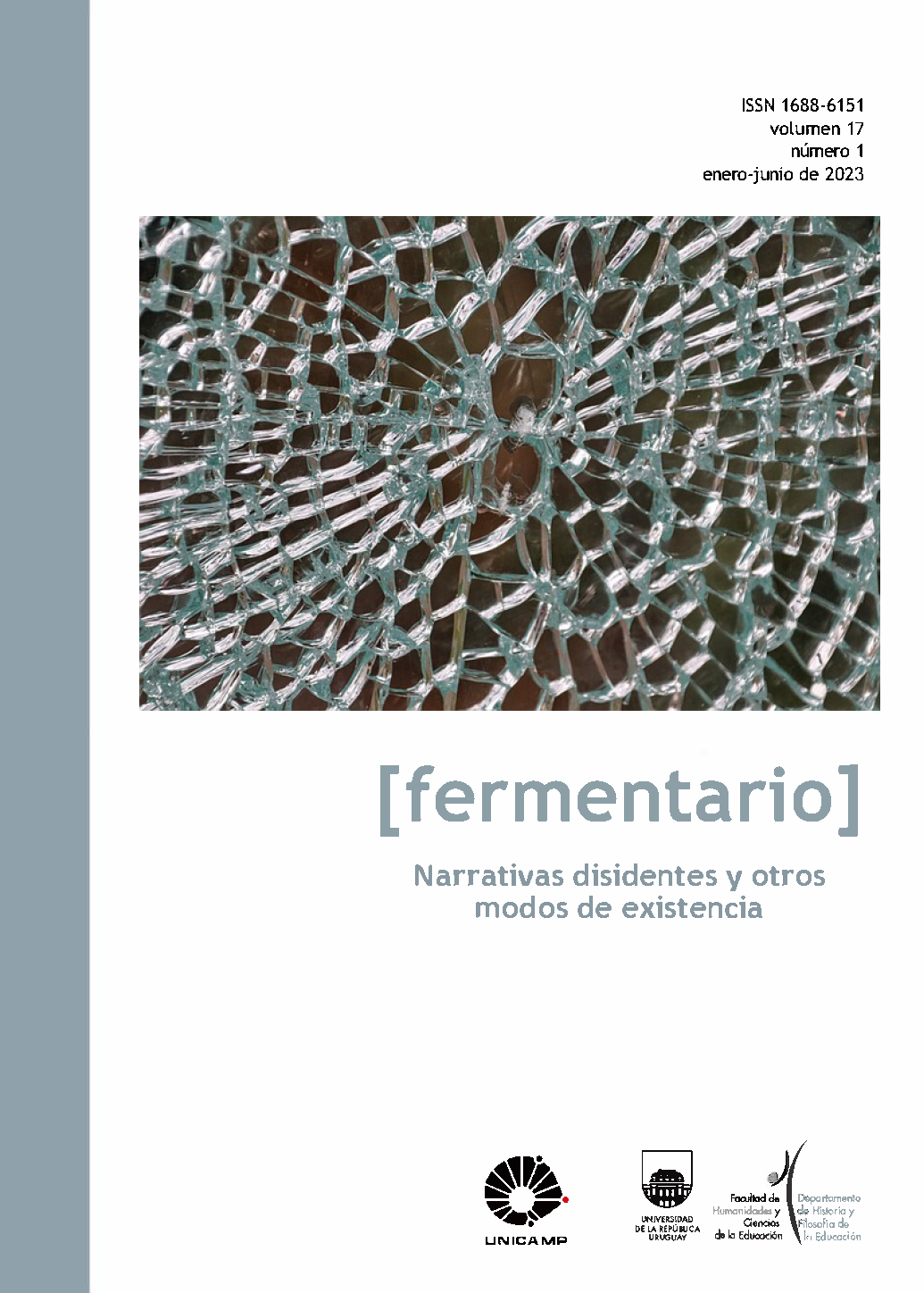Published 2023-06-30
Keywords
- cuerpo,
- género,
- trans,
- escena artística
- body,
- gender,
- trans,
- art scene
- corpo,
- gênero,
- trans,
- cena artística
How to Cite
Abstract
The advancement of struggles for the acquisition of civil rights for LGBTQIA+ people in the last fifty years and the organization of artistic activism by trans people have provided the opening of spaces for the affirmation of diversity and, consequently, corroborated for the visibility of these subjects in different sectors of civil society. Revisiting the notion of monsters postulated by the Portuguese thinker José Gil in his book of the same name, the work in question aims to reflect on the presence of transgender people and gender dissidents in the contemporary art scene in Latin America and their relevance in removing instituted stigmas and prejudices to these subjects. By resorting to the bestiary, the article in question rubs against the classic definitions of monster and summons these identities to assume a political role in contemporary times.
Downloads
References
- Butler, J. Problemas de gênero: Feminismo e subversão. Rio de Janeiro: Civilização Brasileira, 2010.
- Colling, L. (2018). A emergência dos artivismos das dissidências sexuais e de gênero no Brasil da atualidade. Sala Preta, Volume 18 (1), 152-167.
- Gil, J. (2006). Monstros. Lisboa: Relógio D'Água.
- Kafka, F. (2002). O silêncio das sereias. Narrativas do espólio. Trad. Modesto Carone. São Paulo: Cia. das Letras.
- Kiffer, A. (2016). Antonin Artaud. Rio de Janeiro: EdUERJ.
- Leibold, V. E. (2015). La sirena decolonial: Lía La Novia Sirena y sus interrupciones afectivas. Extravío. Revista eletrônica, 8 (1), 148- 164. https://ojs.uv.es/index.php/extravio/article/view/4537/0.
- Liu, D.S. (2016). O percurso histórico da cultura drag: uma análise da cena queer carioca. Pantheon. Repositório Institucional, 1, p. 94. https://pantheon.ufrj.br/handle/11422/4016
- Louro, G. L. (2015). Um corpo estranho: ensaios sobre sexualidade e teoria queer. Belo Horizonte: Autêntica.
- Perlongher, N. (2013). Prosa Plebeya. Buenos Aires: Excursiones.
- Preciado, P. B. (2011). Multidões queer: notas para uma política dos “anormais”. Estudos Feministas, Revista eletrônica, 19 (1), 11- 20.https://periodicos.ufsc.br/index.php/ref/article/view/S0104-026X2011000100002
- _______________. (2018). Testo Yonqui: sexo, drogas y biopolítica. Buenos Aires: Paidós.
- _______________. (2018). Transfeminismo. Série Pandemia. São Paulo: N-1.
- Soerensen, C. (2011). A carnavalização e o riso segundo Mikhail Bakhtin. Travessias, Volume 5, (1), 318- 330.

